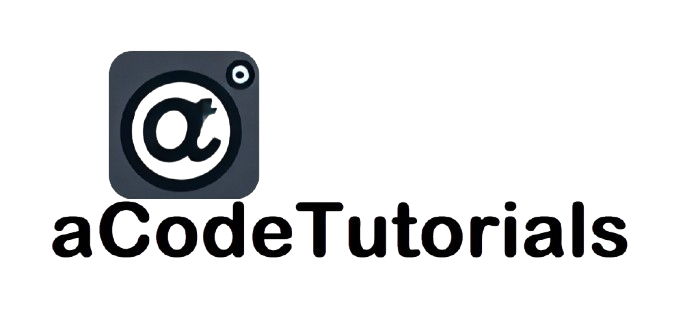Benefits of Utility-First Design in Tailwind CSS
Benefits of Utility-First Design in Tailwind CSS
Tailwind CSS’s utility-first design approach has become popular because it shifts away from the traditional component-based CSS frameworks. Instead of relying on pre-defined components (e.g., buttons, cards, navbars) that you modify, utility-first design allows you to compose layouts and styles using low-level utility classes. This design philosophy offers several key benefits:
1. Faster Development Workflow
With utility-first design, developers can quickly style elements directly within the HTML without writing additional custom CSS. Instead of switching back and forth between CSS and HTML files, you can apply classes like bg-blue-500, p-4, and text-lg directly in the markup.
Benefits:
- No need for custom CSS: Avoid writing long CSS rules, focusing on combining utility classes.
- Rapid prototyping: You can experiment with different styles and layouts much faster.
Example:
<button class="bg-blue-500 text-white px-4 py-2 rounded">
Click Me
</button>
In this example, a fully styled button is created in just one line, without needing a separate CSS file or writing custom rules.
2. Consistency in Design
Tailwind promotes consistent use of spacing, typography, colors, and layout rules by providing a well-thought-out design system. Every class comes from the same scale, ensuring that the designs remain uniform across the entire application.
Benefits:
- No design drift: Utility classes like
p-4(padding),text-lg(font size), andbg-gray-100(background color) follow a consistent spacing and color scale. - Reusable styles: Tailwind’s design system is modular and repeatable, allowing for quick replication of consistent styles across different components.
Example:
<div class="p-4 bg-gray-100 text-lg rounded-md">
A consistently styled component
</div>
3. Maintainable and Scalable Code
Because Tailwind encourages writing style definitions directly in HTML with utility classes, it leads to less CSS bloat over time. With traditional CSS, it’s common to accumulate redundant or unused styles, but Tailwind minimizes that risk.
Benefits:
- Reduced CSS files: You avoid writing bloated, component-specific CSS that might overlap with other styles.
- Cleaner CSS: In production, Tailwind uses PurgeCSS to automatically remove unused utility classes, leading to a much smaller CSS file.
- Scalable: As the project grows, the CSS complexity doesn’t increase significantly since you rely on the same utility classes.
Example:
In traditional CSS, you might have multiple class selectors and specificity issues:
/* Traditional CSS */
.button { padding: 1rem; background: blue; }
.card { padding: 1rem; background: gray; }
With Tailwind, the styles are applied directly through utility classes without worrying about conflict or specificity:
<button class="p-4 bg-blue-500">Button</button>
<div class="p-4 bg-gray-100">Card</div>
4. Easy Customization and Flexibility
Tailwind is designed to be highly flexible, allowing you to override the default configuration to suit your design system. The tailwind.config.js file allows you to define custom colors, spacing, and more.
Benefits:
- Custom utility classes: You can easily create new utility classes or extend the existing ones by modifying the configuration file.
- No need for CSS overrides: You don’t need to write additional styles to override defaults as everything can be customized within Tailwind.
Example:
// tailwind.config.js
module.exports = {
theme: {
extend: {
colors: {
'brand-blue': '#1e40af',
'brand-gray': '#64748b',
},
spacing: {
'72': '18rem',
'84': '21rem',
},
},
},
}
In this configuration file, custom colors (brand-blue, brand-gray) and spacing utilities are added. These can now be used throughout the HTML.
5. Responsive Design Made Simple
Tailwind’s utility-first design makes it easy to create responsive layouts with its built-in responsive variants. By prefixing utilities with sm:, md:, lg:, and xl:, you can easily apply different styles at different screen sizes.
Benefits:
- Mobile-first design: By default, Tailwind classes are mobile-first, meaning styles apply to small screens first, and you can override them for larger screens.
- Granular control: You can easily control how elements behave across different screen sizes without writing separate media queries.
Example:
<div class="text-lg sm:text-xl md:text-2xl lg:text-4xl">
Responsive Text Size
</div>
In this example, the text size changes based on the screen size: small screens use text-lg, medium screens use text-2xl, and large screens use text-4xl.
6. Small Production File Sizes
Tailwind uses PurgeCSS to remove unused utility classes in your final production build, ensuring that only the necessary CSS is included. This results in significantly smaller CSS files compared to traditional frameworks.
Benefits:
- Performance optimization: By removing unused CSS, the final CSS file size is much smaller, improving load times.
- Optimized for production: Tailwind provides an easy way to purge unused styles through its configuration, making performance management straightforward.
Example of Purging Unused CSS:
// tailwind.config.js
module.exports = {
content: [
'./src/**/*.html',
'./src/**/*.js',
],
}
When building for production, Tailwind will scan these files for used class names and remove any unused ones.
7. Less Context Switching Between CSS and HTML
Traditional CSS workflows often involve context-switching between writing HTML and CSS, leading to slower development. With utility-first design, developers can focus entirely on the HTML and styling at the same time, eliminating the need to toggle between separate CSS files.
Benefits:
- Single point of focus: Developers can focus on the markup and style within the same file.
- Fewer files to manage: Since much of the styling is handled directly through classes in HTML, you won’t need as many CSS files or selectors.
Example:
In traditional CSS, styling the following element requires adding CSS rules separately:
<button class="btn-primary">Click Me</button>
/* CSS */
.btn-primary {
background-color: blue;
color: white;
padding: 1rem;
border-radius: 0.5rem;
}
With Tailwind, everything is done in the HTML:
<button class="bg-blue-500 text-white p-4 rounded">
Click Me
</button>
8. Improved Collaboration Between Designers and Developers
Tailwind’s utility classes map directly to visual design properties (such as spacing, colors, and typography), making it easier for designers and developers to collaborate. A designer can specify spacing as 16px (which maps to p-4), and developers can implement it quickly.
Benefits:
- Clear communication: Designers and developers use the same language when discussing designs.
- Design to code translation: Translating design mockups into code is more intuitive with utility-first classes.
